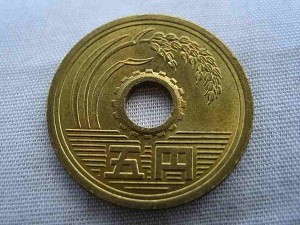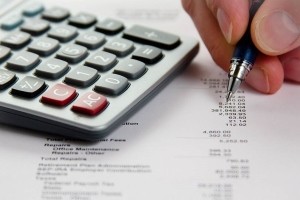The United States dollar/Japanese yen currency pair denotes the exchange rate between the U.S. dollar and the Japanese yen and expresses it as the number of Japanese yen needed to buy one U.S. dollar.
Our Forex Signals
1 - month
Subscription
 Up to 15 signals daily
Up to 15 signals daily 76% success rate
76% success rate Entry, take profit & stop loss
Entry, take profit & stop loss Amount to risk per trade
Amount to risk per trade Risk reward ratio
Risk reward ratiomonth
3 - month
Subscription
 Up to 15 signals daily
Up to 15 signals daily 76% success rate
76% success rate Entry, take profit & stop loss
Entry, take profit & stop loss Amount to risk per trade
Amount to risk per trade Risk reward ratio
Risk reward ratiomonth
 Most popular
Most popular
6 - month
Subscription
 Up to 15 signals daily
Up to 15 signals daily 76% success rate
76% success rate Entry, take profit & stop loss
Entry, take profit & stop loss Amount to risk per trade
Amount to risk per trade Risk reward ratio
Risk reward ratiomonth
Lifetime
Subscription
 Up to 15 signals daily
Up to 15 signals daily 76% success rate
76% success rate Entry, take profit & stop loss
Entry, take profit & stop loss Amount to risk per trade
Amount to risk per trade Risk reward ratio
Risk reward ratioSeparate Swing Trading Group
 Up to 3 signals weekly
Up to 3 signals weekly 76% success rate
76% success rate Entry, take profit & stop loss
Entry, take profit & stop loss Amount to risk per trade
Amount to risk per trade Risk reward ratio
Risk reward ratiomonth
1 - month
Subscription
 Up to 15 signals daily
Up to 15 signals daily 76% success rate
76% success rate Entry, take profit & stop loss
Entry, take profit & stop loss Amount to risk per trade
Amount to risk per trade Risk reward ratio
Risk reward ratiotime
3
Payment methods
Trading platforms
Regulated by
Support
Min.Deposit
Leverage max
Currency Pairs
Classification
Mobile App
Min.Deposit
$100
Spread min.
Variables pips
Leverage max
100
Currency Pairs
40
Trading platforms
Funding Methods





Regulated by
FCA
What you can trade
Forex
Indices
Actions
Cryptocurrencies
Raw Materials
Average spread
EUR/GBP
-
EUR/USD
-
EUR/JPY
0.3
EUR/CHF
0.2
GBP/USD
0.0
GBP/JPY
0.1
GBP/CHF
0.3
USD/JPY
-
USD/CHF
0.2
CHF/JPY
0.3
Additional Fee
Continuous rate
Variables
Conversión
Variables pips
Regulation
Yes
FCA
No
CYSEC
No
ASIC
No
CFTC
No
NFA
No
BAFIN
No
CMA
No
SCB
No
DFSA
No
CBFSAI
No
BVIFSC
No
FSCA
No
FSA
No
FFAJ
No
ADGM
No
FRSA
71% of retail investor accounts lose money when trading CFDs with this provider.
Min.Deposit
$100
Spread min.
- pips
Leverage max
400
Currency Pairs
50
Trading platforms
Funding Methods




Regulated by
CYSECASICCBFSAIBVIFSCFSCAFSAFFAJADGMFRSA
What you can trade
Forex
Indices
Actions
Cryptocurrencies
Raw Materials
Etfs
Average spread
EUR/GBP
1
EUR/USD
0.9
EUR/JPY
1
EUR/CHF
1
GBP/USD
1
GBP/JPY
1
GBP/CHF
1
USD/JPY
-
USD/CHF
1
CHF/JPY
1
Additional Fee
Continuous rate
-
Conversión
- pips
Regulation
No
FCA
Yes
CYSEC
Yes
ASIC
No
CFTC
No
NFA
No
BAFIN
No
CMA
No
SCB
No
DFSA
Yes
CBFSAI
Yes
BVIFSC
Yes
FSCA
Yes
FSA
Yes
FFAJ
Yes
ADGM
Yes
FRSA
71% of retail investor accounts lose money when trading CFDs with this provider.
Min.Deposit
$50
Spread min.
- pips
Leverage max
500
Currency Pairs
40
Trading platforms
Funding Methods




What you can trade
Forex
Indices
Actions
Raw Materials
Average spread
EUR/GBP
-
EUR/USD
-
EUR/JPY
-
EUR/CHF
-
GBP/USD
-
GBP/JPY
-
GBP/CHF
-
USD/JPY
-
USD/CHF
-
CHF/JPY
-
Additional Fee
Continuous rate
-
Conversión
- pips
Regulation
No
FCA
No
CYSEC
No
ASIC
No
CFTC
No
NFA
No
BAFIN
No
CMA
No
SCB
No
DFSA
No
CBFSAI
No
BVIFSC
No
FSCA
No
FSA
No
FFAJ
No
ADGM
No
FRSA
71% of retail investor accounts lose money when trading CFDs with this provider.
For example, if the USD/JPY exchange rate is 115.00, it means you need 115 yen to buy one U.S. dollar. In this pair, the U.S. dollar is the base currency, and the Japanese yen is the quote currency.
With an impressive daily turnover of about $902 billion, the USD/JPY is the second most traded currency pair in the world. The total daily turnover in the forex market is approximately $5.1 trillion, which means the USD/JPY represents about 17.7 percent of this colossal amount.
History of the Japanese Yen
The Japanese yen was brought into circulation in July 1871. The Meiji government officially adopted the yen in an act which was signed on June 27, 1871. Yen means ‘a round object’.

History of the United States Dollar
The U.S. dollar has been the United States’ standard monetary unit for more than 200 years. It has also been the world’s official reserve currency since the Bretton Woods Agreement in 1944.
How the USD/JPY is Traded
Although there are other ways to trade this currency pair, we’ll focus only on how it’s done with retail forex trading.
USD/JPY Lot Size
A standard lot in forex is 100,000 of the particular currency pair. However, most retail forex brokers offer lot sizes as small as 0.01 lots, which is 1000 of the particular currency pair. This is called a micro lot. Some trading platforms denote this as a 1K lot size. Others refer to a 1K lot as one unit.
For a really small investor, a 1K lot sounds like a really big trade size. After all, how would someone with a $500 account be able to open a 1000 dollar position? Well, the great thing about trading forex is that retail brokers allow you to trade with leverage.
The leverage offered by retail forex brokers generally vary between 1:100 and 1:1000. Some brokers offer ridiculously high leverage of 1:2000, 1:3000, and even 1:5000. Of course, some countries regulate the amount of leverage you can use as a retail forex trader, like the United States which allows a maximum leverage of 1:50.
Let’s use 1:100 leverage as an example. If you have a $500 account and you want to open a 1K trade on the USD/JPY, you will need $10 to open the position. Without using leverage, this would not be possible because a 1K lot of the USD/JPY is worth $1000.
Pip Value of the USD/JPY
To establish the pip value of the USD/JPY, we first need to consider what a pip is. If the USD/JPY is trading at 110.01 and the exchange rate moves to 110.02, it has moved one pip higher. The second digit after the decimal point is called a pip.
To calculate the pip value of the USD/JPY, we’ll use a 1K lot as an example. On the USD/JPY, one pip is 0.01, or 1/100 of one Japanese yen. Multiply this by 1000 and you get 10 yen. At the current exchange rate, one U.S. dollar is valued at 110 Japanese yen. To get the pip value in U.S. dollar, we calculate the dollar value of 10 yen at the current USD/JPY exchange rate (110 yen per one dollar) – 10 yen divided by 110 = $0.090909. Let’s just round it to $0.09. This is the pip value of a micro lot (1k lot) of the USD/JPY at the current exchange rate.
It’s important to know that the USD/JPY pip value (in U.S. dollar) changes with the exchange rate. For example, when the USD/JPY exchange rate rises, the pip value in U.S. dollar decreases due to the devaluation of the yen. Remember, the pip value for a 1K lot is always 10 yen. This means that when the yen is worth less, the pip value in other currencies will also fall.
Let’s say the yen depreciates against the U.S. dollar until the USD/JPY trades at 220.00. The pip value would then be half of what it is at the current exchange rate of 110.00. To work it out, we’d have to divide 10 yen by 220 (the exchange rate) which would give us a pip value of $0.04545.

Are you doing your calculations correctly?
Here at FXLeaders, we go the extra mile to offer traders the best forex signals possible. In 2016 alone, we bagged a phenomenal 4,907 pips! A substantial amount of these gains came from our USD/JPY signals.
Let’s calculate how much money you’d make if you traded a USD/JPY signal with 12 micro lots, bought at 110.000, and hit a profit target of 276 pips at 112.760. 12 micro lots is 12,000 of the USD/JPY currency pair. If we multiply 276 pips by the current pip value of $0.090909, we will definitely get the wrong answer: 12 micro lots X 276 pips X $0.090909 = $301.09.
But if we take the target price of 112.760 and subtract the entry price of 110.000, we get 2.76 yen. If we multiply this by 12000 (12 micro lots of the pair) we get a profit of 33,120 yen. Remember, the new exchange rate is 112.760, which means the yen has lost some of its value. If we convert our profit of 33,120 yen to dollars, we’ll only get $293.72, and not $301.09.
Because of the dynamic pip value of this pair, we can’t use the current pip value at any point in time to accurately project take profit or stop loss values for trades. We can use this as an estimate, especially if the target is relatively small.
But when we need to make exact calculations, we need to calculate the profit or loss in Japanese yen and convert this number to U.S. dollars at the new USD/JPY exchange rate, like in the example above. Just like the pip value (in U.S. dollar) decreases as the pair moves higher, the pip value increase when the pair moves lower. The pip value in yen always remains the same because the quote currency is yen.
Instruments Correlated to the USD/JPY
Correlated Currencies
Of the major currency pairs, the USD/CHF and the EUR/USD have the highest correlation to the USD/JPY. The USD/CHF has a one-year correlation of 0.84 to the USD/JPY, and the EUR/USD has an inverse one-year correlation to the USD/JPY of -0.79.
There are quite a few Japanese yen pairs that are highly correlated to the USD/JPY, which include the CHF/JPY (0.96), CAD/JPY (0.94), EUR/JPY (0.85), and SGD/JPY (0.92). Of course, the HKD/JPY is basically 100% positively correlated to the USD/JPY because the Hong Kong dollar is pegged to the U.S. dollar.
Although gold is not a currency by definition, it is often viewed and traded in the same way as currencies, especially in the modern electronic trading environment. The Japanese yen is highly correlated to gold, and hence, the USD/JPY and XAU/USD (gold/United States dollar) have a remarkable one-year inverse correlation of -0.91). If the USD/JPY pair moves higher, gold tends to move lower.
Correlated Equity Indices
The Japanese Nikkei 225 stock index is highly correlated to the USD/JPY due to Nikkei’s inverse correlation to the Japanese yen. The Nikkei and the USD/JPY have a one-year correlation of 0.87.
There is a general correlation between the USD/JPY and global equity indices. Two more examples are the French CAC 40 with a one-year correlation of 0.71 and the US 30 (Wall Street 30) with a one-year correlation of 0.72.
Major Economic Events that Impact the USD/JPY
Of the many economic events that influence the USD/JPY, there are a few that can cause substantial volatility in this exchange rate:
1. Monetary Policy – Actions and Comments by Central Banks
Monetary policy is certainly one of the most important drivers of the USD/JPY. The Federal Reserve of the United States and the Bank of Japan (BOJ) are in charge of their countries’ monetary policies.
When the FED and the BOJ comment or take action in regards to interest rates, quantitative easing, inflation, and economic growth forecasts, it often causes violent moves in the USD/JPY exchange rate.
2. Economic Indicators
Economic indicators are used to analyze how well a country’s economy is performing, and to predict future economic growth. There are three main categories of economic indicators: leading, lagging, and coincident indicators.
Indicators like GDP numbers (gross domestic product), CPI numbers (consumer price index), interest rate decisions, the unemployment rate, wage growth, industrial production, and retail sales numbers, are regularly released in both the U.S. and Japan. Although these aren’t the only important economic indicators, they have great potential to move the USD/JPY, especially interest rate decisions, GDP and CPI numbers, and labor market data (like the U.S. nonfarm payrolls numbers, unemployment rate, etc.).

Excessive unemployment is negative for economic growth and can weigh on a country’s currency
Although economic news out of Japan can move the USD/JPY exchange rate considerably, the most market-moving economic news releases typically emanate from the United States.
AvaTrade - Established Broker With Commission-Free Trades

- Minimum deposit of just 250 USD to get lifetime access to all the VIP channels
- Awarded Best Global MT4 Forex Broker
- Pay 0% on all CFD instruments
- Thousands of CFD assets to trade
- Leverage facilities available
- Instantly deposit funds with a debit/credit card

Forex Signals and Valuable Trading Info
If you’re looking for a breakthrough in your trading career, I’d invite you to visit our forex signals page today.
That’s not all, though. We have an amazing library of forex trading strategies, live market updates, broker recommendations, and of course, our forex trading course.
What are you waiting for? Join the FX Leaders community now!

